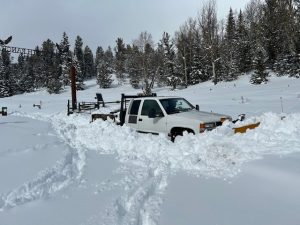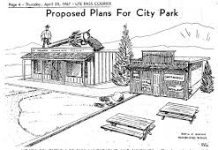Weather Experts: Colorado May Experience a Harsh Winter for ‘25-26’ Season
Trevor Phipps
Now that mid-October is here many area locals have wondered when the snow will start to fly. And more importantly, if it is time to get those skis and snowboards tuned up immediately, or to just plan on more fall-like hiking excursions and park picnics, and even links outings down the Pass.
And of course, there is the issue of winter car maintenance, and getting your car or truck ready for a several-foot dump, not an unusual occurrence for this time of year.
Even though Mother Nature tends to do whatever she wants each year, local weather forecasters start wagering predictions on fall/winter snowstorms, starting in late summer. As a result, it’s often interesting to see which ones are right on target, and which picks almost resemble the many failed forecasts of the NFL football season or in determining the fate of the Denver Broncos. Picking weather in Colorado is quite a gamble and still reigns as an iffy proposition, despite the many advances in technology.
Over the past few weeks, it seemed as if the summer monsoon season hit late with rainy weather persisting through September. The fall foliage season surprisingly was much better than past years.
Then the sun came back out in October with some warmer-than-average, sunny days. So far, El Paso and Teller Counties have only experienced snowfall in the high elevations, surrounding the summit of Pikes Peak.
Last week though, cooler temperatures came in at night. And a rainstorm last Monday was slightly frozen and gave hints that the first snow could be on its way.
And of course, the weather forecasts depend on which source is believed. Many forecasters suggest that this season could see snow this week, as the average first snow for the Pikes Peak Region generally falls around October 19.
Over the past week, temperatures dropped to the mid to low 30s, but the region has yet to see its first hard freeze. Other experts say that due to patterns in the Pacific Ocean that resemble La Nina, the snow arrival could get delayed.
Officials from the NOAA did confirm that there is a weak La Nina pattern this month. That usually means that the northern part of the country (and state) will see above average snow totals, and the south will see below average moisture numbers.
Moreover, due to the La Nina pattern, many forecasters think that the snow won’t start to fly until later this year and the region might not see its first major snowfall until next month. In 2024, the Ute Pass Region didn’t see its first major snow fall until November 5. But then, Woodland Park got hit with about two feet of snow over the next few days.
According to The Weather Channel, the forecast for this week should stay decently warm and sunny. The Weather Channel’s website predicts highs in the high-50s and low-60s; and low temps in the mid-30s throughout the week.
But then, things start to change next week as November approaches. The Weather Channel predicts that Woodland Park and the surrounding area will see high temperatures drop to the low-50s in the daytime. Then at night, temperatures are expected to plunge into the 20s, starting the several-month-long stint of temperatures dropping below freezing every night.
The Old Farmer’s Almanac seems to mostly agree with this view but hints at a possibility of snow soon. The Farmer’s Almanac states that this week and following week the region will reap the benefits of warm and sunny temperatures, but then cold weather and periods of rain or snow are possible from Nov. 5-9. The month of November will stay mostly warm and sunny with stints of cold and rain/snow possible here and there.
Most Sources Predict Above Average Snowfall
Due to the presence of La Nina during the late fall and early winter season, it could take longer for the snow to start. According to an article published by The Aspen Times, many of the ski areas could have a later start this season. However, the La Nina patterns could favor more snow in the northern mountains of Colorado making them become the first to open. This has been the trend for the last few ski seasons, with northern mountains, such as Steamboat, basking in deep powder, while those closer to home had to wait a little bit.
But after the snow does start to fall, most forecasters agree that the region will have colder temperatures and more snowfall than what we have been dealt the past few years. Earlier this year, the Old Farmer’s Almanac released its 2025-2026 Winter Weather Map and Forecast calling for a “mostly mild, with pockets of wild” fall/winter season.
The almanac said that the season will experience slightly colder than normal temperatures, coupled with a mostly average snowfall. But at times, there can be some big snow accumulations especially during the late winter/early spring seasons.
“Don’t lose track of your snow shovels and umbrellas,” The Old Farmers’ Almanac editor Carol Connare said. “Most areas will experience near-normal to slightly milder temperatures, but from the Appalachians south through the Southeast and Florida, and westward across the Ohio Valley, we’re predicting a colder-than-normal winter.”
Overall, the Old Farmer’s Almanac Map calls for the entire state of Colorado (and the rest of its region) to have a “very cold and snowy” winter season. Last year, Colorado Springs received 43.3 inches of snow versus Denver’s 47.7 inches. Both of these amounts were slightly above what both cities’ usually get.
Therefore, this year expect to see slightly more with totals possibly reaching more than 50 inches. The Teller County region does usually see more snowfall than the cities in the Front Range. However, last year it seemed like several major snowstorms avoided the high country only to strike lower elevations, such as Pueblo.
Only time will tell as it is still too early to come up with accurate forecasts. However, law enforcement officials and rescue workers say now is the time to start getting prepared for heavy snowfall.




